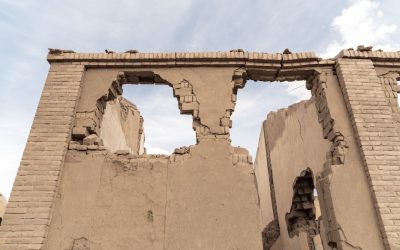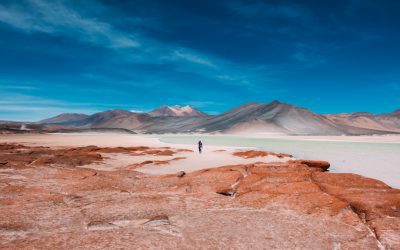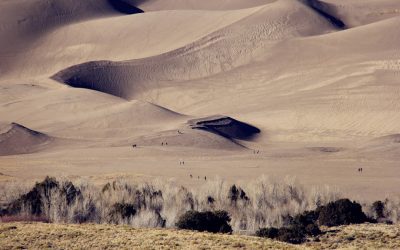Explore the World Through Geography, Natural Resources & Daily History
Clear, reliable and engaging guides that help you understand our planet — from UK geography education to global natural resources and On This Day history events.
Explore, discover, and learn about the wonders of our world! At Earth Site, we’re passionate about bringing geography, history, and science to life for curious minds of all ages. Whether you’re delving into historical events, uncovering the mysteries of the natural world, or seeking interactive resources, you’re in the right place.
Here, you can uncover the stories behind historical events, explore the natural wonders of our planet, and gain valuable insights into how the Earth’s systems shape our daily lives. From the towering peaks of mountain ranges to the far-reaching impacts of human innovation, we aim to make every topic both engaging and informative.
Start your journey of discovery with us today, and let’s make learning an adventure!
What We Cover
Earth Site brings together engaging and accessible educational content designed to help you understand the world, its history, and its natural systems.
🌍 Geography Education (UK & Worldwide)
We publish clear, easy-to-understand geography resources for students, teachers and curious learners. Our guides support geography education in the UK and cover physical geography, climate, ecosystems, population, and global development.
⛏️ Natural Resources & Environmental Geography
Explore detailed country profiles covering natural resources, mining, energy, geology and global environmental challenges. We show how nations manage minerals, water, land and ecosystems, and why these resources matter.
📅 On This Day in History
Every day has a story. Our On This Day history series features major events, anniversaries, traditions, and cultural milestones from around the world — with timelines, context, and fun facts.
TIMELINE
History of Romania
The history of Romania is inextricably linked with the ancient Dacians, a group of Thracian tribes that inhabited the region now known as Romania. The Dacians were renowned for their formidable warrior culture and rich traditions, which encompassed advanced agricultural practices and a complex social structure. They established numerous fortified settlements, with Sarmizegetusa Regia being the most notable, serving as their capital and religious centre. The Dacians exhibited exceptional skill in metalwork, particularly with gold and silver, and their craftsmanship was highly esteemed throughout the ancient world. Their society was characterised by a strong sense of identity and resistance to external influences, especially from the expanding Roman Empire. The Roman conquest of Dacia, which reached its culmination in 106 AD under Emperor Trajan, marked a significant turning point in the region’s history. The Romans sought to exploit Dacia’s abundant mineral resources, particularly gold, and to expand their empire’s borders. The conquest presented considerable challenges; the Dacians, led by their king Decebalus, mounted fierce resistance against the Roman legions. However, after a series of intense battles, the Romans emerged victorious, leading to the establishment of Dacia as a Roman province. This conquest facilitated a profound transformation of the region, as Roman culture, language, and governance began to permeate Dacian society. The integration of Dacia into the Roman Empire laid the foundation for the development of Romanian identity, as the Latin language and Roman customs merged with local traditions. Summary The Dacians were an ancient people who inhabited the territory of modern-day Romania and were conquered by the Romans in 106 AD. Wallachia and Moldavia emerged as powerful medieval Romanian principalities...
Climate Zones of Romania: Different Climate Regions Of Romania
Romania, a country steeped in history and natural beauty, boasts a remarkable diversity of climate zones that reflect its varied topography and geographical position in southeastern Europe. This rich tapestry of climates is shaped by the interplay of the Carpathian Mountains, the Danube River, and the Black Sea, each contributing to the unique weather patterns experienced across the nation. From the temperate continental climate that dominates much of the country to the subtropical influences found in certain regions, Romania‘s climate is as multifaceted as its cultural heritage. Understanding these climate zones is essential not only for appreciating the natural environment but also for grasping how they influence agriculture, tourism, and daily life in Romania. The climate of Romania is characterised by significant regional variations, which can be attributed to its geographical features and location. The country is bordered by Ukraine to the north, Moldova to the east, and Bulgaria to the south, whilst the west is flanked by Hungary. This positioning creates a complex climatic landscape that ranges from cold winters to hot summers, with distinct seasonal changes. The interplay between continental and maritime influences results in a variety of microclimates, each with its own unique characteristics. As we delve deeper into the specific climate zones of Romania, we will uncover how these diverse environments shape not only the physical landscape but also the cultural and economic activities of its inhabitants. Summary Romania has a diverse range of climate zones, from continental to subtropical, due to its varied topography and geographical location. The continental climate in Romania is characterized by hot summers and cold winters, with significant temperature variations...
Natural Resources of Romania: Where Natural Resources are Located in Romania
Romania, a nation rich in history and natural splendour, possesses a diverse array of natural resources that are crucial to its economy and cultural identity. Situated in Eastern Europe, Romania‘s geographical location has bestowed upon it a varied landscape, ranging from the Carpathian Mountains to the fertile Danube River plains. This topographical diversity not only contributes to the country’s picturesque scenery but also supports a wealth of natural resources essential for its development. The country is endowed with abundant minerals, forests, agricultural land, and water bodies, all of which are vital for sustaining its population and promoting economic growth. The importance of these resources extends beyond their economic value; they are deeply interwoven with Romania’s cultural heritage and environmental sustainability. The forests, for example, serve not only as a source of timber and biodiversity but also hold cultural significance for many communities. Similarly, the agricultural lands are not merely crop fields but are imbued with traditions and practices that have been handed down through generations. As Romania grapples with the complexities of modernisation and globalisation, the challenge lies in striking a balance between resource exploitation and the imperative of conservation and sustainable management. This delicate equilibrium is crucial to ensure that future generations can continue to benefit from Romania’s natural wealth. Summary Romania is rich in natural resources, including minerals, forests, agriculture, water, and energy sources. The country has significant mineral resources, including coal, oil, natural gas, and various metals. Romania’s forest resources are extensive, covering over a quarter of the country’s land area and providing valuable timber and biodiversity. The agricultural sector in Romania is diverse, with fertile...
Terrain and Topography of Romania: mountains, valleys, and plains.
Romania, a country rich in history and culture, boasts a remarkably diverse terrain that captivates both locals and visitors alike. Situated in Eastern Europe, it is bordered by the Carpathian Mountains to the west and the Black Sea to the east, creating a striking contrast between rugged highlands and serene coastal landscapes. The country’s topography comprises various geographical features, including mountains, plateaus, rivers and plains, each contributing to Romania‘s unique ecological and cultural identity. This rich variety not only shapes the natural environment but also influences the lifestyle, traditions and economic activities of its inhabitants. The interplay of these geographical elements has resulted in a landscape that is both varied and beautiful. From the snow-capped peaks of the Carpathians to the verdant valleys of Transylvania, Romania’s terrain offers numerous opportunities for exploration and adventure. The Danube River, one of Europe’s most significant waterways, meanders through the country, providing vital resources and serving as a natural boundary with neighbouring nations. As one delves deeper into the distinct regions of Romania, one uncovers the intricate relationship between its topography and the cultural heritage that has flourished in this captivating land. Summary Romania’s terrain and topography are diverse, ranging from mountains to plains and plateaus. The Carpathian Mountains are the backbone of Romania, running from the north to the southwest. The Transylvanian Plateau is characterized by rolling hills and valleys, making it a picturesque region. The Danube River Basin is known for its fertile plains and wetlands, making it an important agricultural area. The Moldavian and Wallachian Plains are the agricultural heartlands of Romania, known for their rich soil and productive farms....
Cultural or Historical Sites of Romania: Important Cultural Landmarks or Historical Sites In Romania
Romania, a country steeped in rich history and vibrant culture, offers numerous cultural and historical sites that reflect its diverse heritage. Situated in Eastern Europe, Romania is a land where ancient traditions intertwine with modern influences, creating a unique tapestry that attracts visitors from around the world. From the Carpathian Mountains to the Danube Delta, the landscape is dotted with architectural marvels, ancient ruins and picturesque villages that illustrate the story of a nation shaped by centuries of tumultuous events and cultural exchanges. The country’s historical sites are not merely relics of the past; they are living testaments to the resilience and creativity of the Romanian people. As one traverses this captivating land, one cannot help but be drawn to its myriad cultural treasures. Each site offers insight into Romania’s complex history, showcasing influences from the Roman Empire, the Ottoman Empire and various European powers that have left their mark on the nation. The rich folklore and traditions that permeate Romanian culture further enhance the appeal of its historical sites, inviting exploration and discovery. Whether one is wandering through medieval towns, admiring intricate frescoes in monasteries or observing grand palaces, Romania’s cultural and historical sites provide a remarkable journey through time, revealing the essence of a nation that has endured and thrived through adversity. Summary Romania is home to a wealth of cultural and historical sites, each with its own unique story and significance. Bran Castle, often associated with the legend of Dracula, is a must-visit for those interested in the mysterious and mythical side of Romania’s history. The Painted Monasteries of Bucovina showcase stunning frescoes that depict religious...
Population Density of Romania
Romania, a country steeped in history and cultural diversity, presents a fascinating case study when it comes to population density. As of the latest estimates, Romania‘s population stands at approximately 19 million, spread across a land area of about 238,397 square kilometres. This results in a population density of around 80 people per square kilometre, which is relatively moderate compared to other European nations. However, this figure belies the complexities of demographic distribution within the country. The population density is not uniform; it varies significantly from one region to another, influenced by a myriad of factors including geography, economic opportunities, and historical migration patterns. Understanding these nuances is essential for grasping the broader socio-economic landscape of Romania. The implications of population density extend beyond mere numbers; they shape the very fabric of Romanian society. High-density areas often experience a concentration of resources, services, and infrastructure, whilst sparsely populated regions may struggle with access to basic amenities. This uneven distribution can lead to significant disparities in quality of life, economic development, and social cohesion. As Romania continues to evolve in the wake of globalisation and European integration, examining its population density becomes crucial for policymakers and citizens alike. It serves as a lens through which one can assess the challenges and opportunities that lie ahead for this vibrant nation. Summary Romania has a population density of 84 people per square kilometre, making it one of the least densely populated countries in Europe. Factors affecting population density in Romania include historical migration patterns, economic opportunities, and natural geographical barriers. The urban population in Romania is increasing, leading to a higher population...
Romania
Romania (România) Capital: Bucharest Population (Estimated July 2012): 21,848,504 Area: 238,391km2 or 92,043mi2 Currency: Leu (Plural Lei) Official Language: Romanian Political Information: Presidential Republic Official Religion: No Official Religion(approximately 86.8% of the population are Eastern Orthodox, 7.5% are Protestant, 4.7% are Roman Catholic, 0.9% have other or unspecified beliefs and 0.1% have no religious beliefs). Highest Mountain: Moldoveanu at 2,544 m or 8,346ft GDP Official Exchange Rate (OER is more precise at gauging a country’s economic power) (Estimated 2011): $185.3 billion (US$) or (GBP) GDP (OER) Per Capita (per member of the population estimated 2011): (US$) or (GBP) GDP Purchasing Power Parity (PPP is good for gauging living conditions and the use of resources but is not as accurate as OER. This data has been calculated based on the sum value of all goods and services produced in the country valued at prices prevailing in the United States) (Estimated 2011): $263.9 billion (US$) or (GBP) GDP (PPP) Per Capita (per member of the population estimated 2011): $12,300 (US$) or (GBP) Time Zone (GMT/UTC): +2:00 Wildlife: Counties/Provinces/States: 41 counties (judete, singular – judet) and 1 municipality* (municipiu); Alba, Arad, Arges, Bacau, Bihor, Bistrita-Nasaud, Botosani, Braila, Brasov, Bucuresti (Bucharest)*, Buzau, Calarasi, Caras-Severin, Cluj, Constanta, Covasna, Dimbovita, Dolj, Galati, Gorj, Giurgiu, Harghita, Hunedoara, Ialomita, Iasi, Ilfov, Maramures, Mehedinti, Mures, Neamt, Olt, Prahova, Salaj, Satu Mare, Sibiu, Suceava, Teleorman, Timis, Tulcea, Vaslui, Vilcea, Vrancea Leaders: President Traian Băsescu with Prime Minister: Mihai Răzvan Ungureanu. Additional: Proclaimed independence from the Ottoman Empire on the 9th of May 1877 which was recognised by the Treaty of Berlin on the 13th of July 1878. Sources: CIA World Fact Book, Encyclopaedia Britannica. Romania...
Political Boundaries of Qatar: Provinces, Districts, or Historical Boundaries.
Qatar, a small peninsula in the Arabian Gulf, is a sovereign state situated in the Middle East. The political boundaries of Qatar delineate its territorial limits and jurisdiction, both domestically and internationally. The nation shares a land border with Saudi Arabia to the south, whilst the remainder of its territory is encompassed by the Gulf waters. Qatar’s political boundaries are crucial for the governance and administration of the country, as they determine the extent of its sovereignty and influence. Understanding these boundaries is essential for comprehending Qatar’s geopolitical position and the dynamics of its relationships with neighbouring states and the international community. The political boundaries of Qatar are defined not only by its physical geography but also by its legal and administrative divisions. These boundaries are delineated by laws, treaties and agreements that Qatar has entered into with other states and international organisations. Qatar’s political boundaries play a significant role in shaping its domestic policies, economic activities and foreign relations. As such, they are a fundamental aspect of Qatar’s identity and influence in the region and beyond. Summary Qatar’s political boundaries have evolved over time, shaping the country’s governance and administration. The provinces and districts of Qatar play a significant role in the country’s political structure and local governance. Historical boundaries of Qatar have been influenced by various factors, including colonialism and regional geopolitics. Changes in Qatar’s political boundaries over time have been driven by internal and external factors, such as territorial disputes and diplomatic negotiations. The impact of political boundaries on Qatar’s governance is evident in the distribution of resources, representation, and decision-making processes. Provinces and Districts of...
Natural Resources of Qatar: Where Natural Resources are Located in Qatar
Qatar, a small nation situated on the north-eastern coast of the Arabian Peninsula, possesses substantial natural resources that have significantly contributed to its economic development. Despite its diminutive size, Qatar boasts considerable oil and gas reserves, water resources, mining and quarrying materials, agricultural resources, and renewable energy sources. These assets have been instrumental in driving the country’s rapid economic growth over recent decades. However, the sustainable utilisation and conservation of these natural resources are crucial for Qatar’s future economic and environmental well-being. The exploitation of Qatar’s natural resources has generated substantial revenue, which has been invested in infrastructure development, education, healthcare and other sectors. Nonetheless, the country’s heavy reliance on finite resources presents a challenge for long-term sustainability. Consequently, it is imperative for Qatar to prioritise conservation and sustainable use of its natural resources to ensure balanced and sustainable development for future generations. Summary Qatar is rich in natural resources, including oil, gas, water, minerals, and renewable energy sources. The country’s oil and gas reserves are among the largest in the world, making it a major player in the global energy market. Despite its arid climate, Qatar has invested in desalination technology to meet its water needs, making it a leader in water resource management. Qatar’s mining and quarrying industry focuses on the extraction of limestone, silica sand, and gypsum for construction and industrial purposes. The agricultural sector in Qatar is supported by advanced irrigation techniques and technology to overcome the challenges of limited arable land and water scarcity. Qatar is investing in renewable energy sources such as solar and wind power to diversify its energy mix and reduce...
Climate Zones of Qatar: Different Climate Regions Of Qatar
Qatar, a small peninsula in the Arabian Gulf, is renowned for its extreme climatic conditions. The country is divided into several distinct climate zones, each with its own unique characteristics and challenges. These climate zones include the coastal region, desert region, semi-arid region and mountain region. Each of these zones experiences different levels of temperature, humidity and precipitation, making Qatar a diverse and dynamic environment. Understanding the intricacies of these climate zones is crucial for both residents and policymakers to effectively manage and adapt to the changing climate conditions in the region. Qatar’s climate is largely influenced by its geographical location, with the Arabian Gulf to the west and the vast Arabian Desert to the south. The country experiences long, hot summers and short, mild winters, with temperatures often exceeding 40°C during the summer months. The coastal region benefits from the moderating effects of the sea, whilst the desert region is characterised by extreme heat and aridity. The semi-arid region experiences slightly more moderate temperatures and lower levels of precipitation, whilst the mountain region offers cooler temperatures and higher levels of rainfall. Understanding the unique characteristics of each climate zone is essential for developing effective strategies to mitigate the impact of climate change and ensure the sustainability of Qatar’s natural resources. Summary Qatar has four main climate zones: coastal, desert, semi-arid, and mountain. The coastal climate region experiences hot and humid weather with mild winters and high precipitation. The desert climate region is characterized by extremely hot and dry weather with minimal rainfall. The semi-arid climate region has hot summers and mild winters with low precipitation. The mountain climate...
Terrain and Topography of Qatar: mountains, valleys, and plains.
Qatar, a small peninsula in the Persian Gulf, is characterised by its distinctive and varied terrain and topography. The nation is predominantly flat and arid, with extensive expanses of desert and sand dunes. However, it also features coastal valleys and wadis, as well as the Jebel Dukhan mountain range in the west. The terrain and topography of Qatar exert a significant influence on the country’s climate, environment and overall development. This article shall examine the various aspects of Qatar’s terrain and topography, from its flat plains to its mountainous regions, and analyse the challenges and opportunities they present for the future. Summary Qatar’s terrain is characterized by flat and arid plains, coastal valleys and wadis, sand dunes and desert terrain, and the Jebel Dukhan mountain range. The flat and arid plains of Qatar dominate much of the country’s landscape, making it ideal for oil and gas exploration and extraction. Coastal valleys and wadis in Qatar provide important habitats for wildlife and serve as important water sources for the country. The sand dunes and desert terrain of Qatar are popular tourist attractions and offer unique opportunities for desert adventures. The Jebel Dukhan mountain range is the highest point in Qatar and plays a significant role in influencing the country’s climate and environment. The Flat and Arid Plains of Qatar The majority of Qatar’s terrain is characterized by flat and arid plains, with little to no natural vegetation. The landscape is dominated by vast expanses of sand and gravel, with occasional patches of salt flats and sabkhas. The flat plains of Qatar are a result of the country’s geological history, which...
Population Density of Qatar
Qatar, a small peninsula in the Arabian Gulf, is renowned for its high population density. With a land area of merely 11,586 square kilometres, Qatar ranks among the most densely populated countries globally. The population density of Qatar is estimated at approximately 244 people per square kilometre, placing it amongst the highest worldwide. The rapid population growth in recent years has resulted in an increased population density, presenting various challenges for the nation. It is crucial to comprehend the factors contributing to this high population density and its impact on the country’s infrastructure to address these challenges and plan for sustainable development. Qatar’s population density is primarily concentrated in urban areas such as Doha, the capital city, and its surrounding metropolitan regions. The influx of expatriate workers, drawn by the country’s thriving economy and employment prospects, has significantly contributed to the high population density. Moreover, the natural growth of the Qatari population has also played a role in increasing the population density. Consequently, Qatar faces unique challenges in managing its limited land resources and providing adequate infrastructure and services to support its growing population. Understanding the factors contributing to Qatar’s high population density is essential for developing effective strategies to manage and sustainably accommodate the expanding population. Summary Qatar has one of the highest population densities in the world, with a rapidly growing population and limited land area. Factors contributing to Qatar’s high population density include rapid urbanization, influx of expatriate workers, and high birth rates. High population density in Qatar has put a strain on infrastructure, leading to challenges in providing adequate housing, healthcare, and transportation. Challenges faced...











